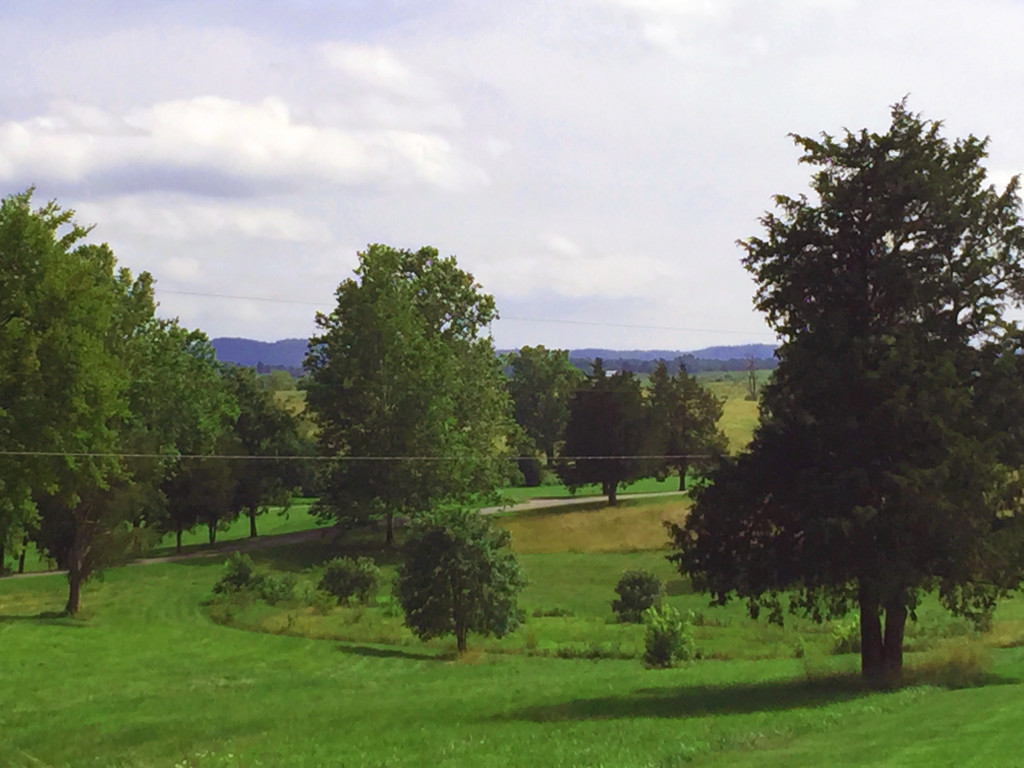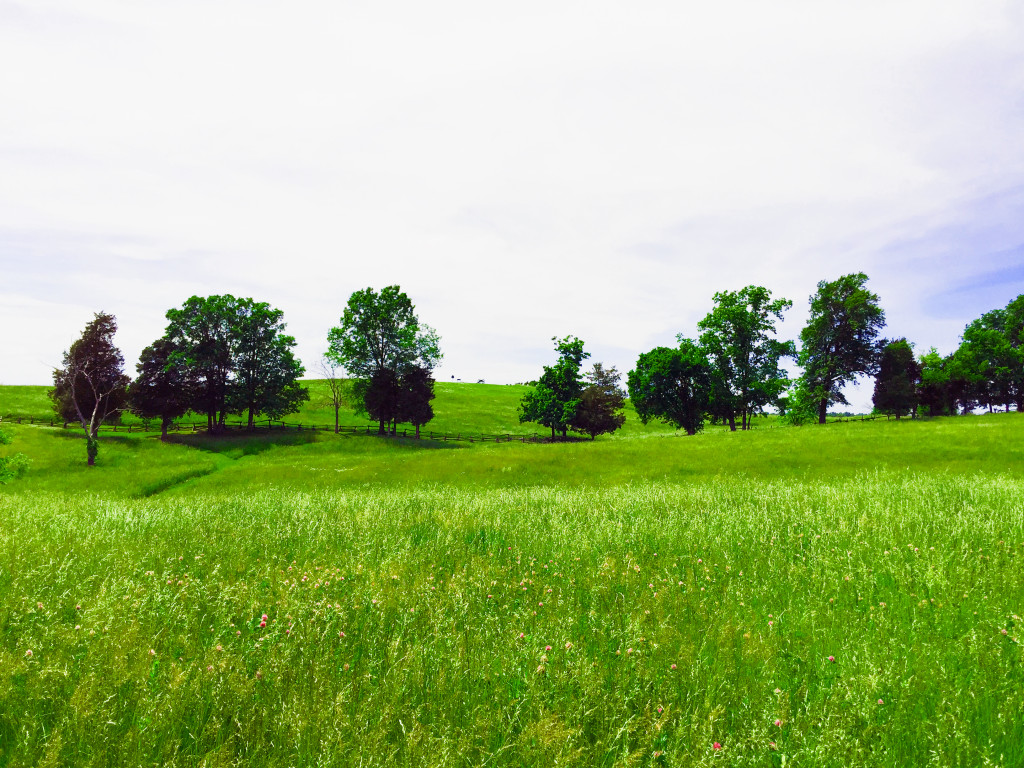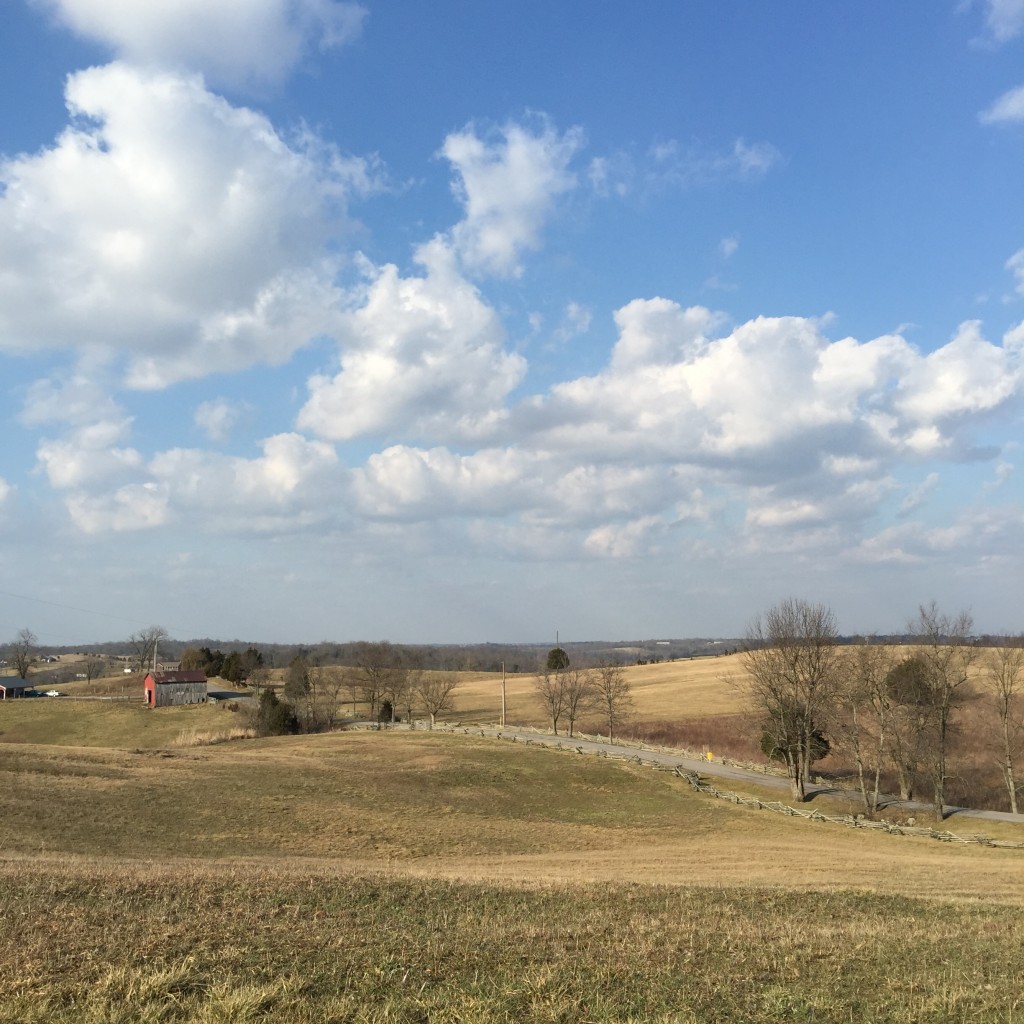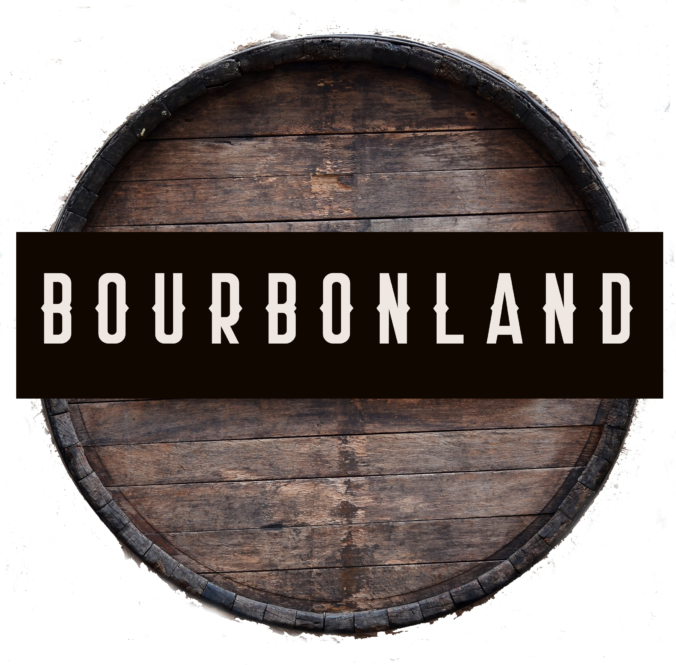Welcome to Bourbonland
When I finished the Bourbon Springs Series, I didn’t want to leave the world I had created. So I came up with the Bourbonland contemporary romance series.
Known characters from Bourbon Springs appear in this second series. And my cozy mysteries, the Devil Springs Cozy Mysteries Series, connect to this series in small ways too. Characters from both contemporary romance series appear in the Devil Springs stories.
Bourbonland Background and Inspiration
It All Starts with Single Barrel

Single Barrel: Bourbonland Short Stories & Novellas 1
The Basics
Bourbonland begins not with a book but with a novella: Single Barrel. Tip: Unless you like spoilers, don’t read Single Barrel before you read Water of Life.
Two couples appear in this work, one you’ve seen, one you haven’t. Timewise, this novella overlaps with the last third or so of Water of Life (and, again, the novella does contain spoilers for that book). Although the cover doesn’t show it, the story does take place during the holidays (from approximately mid-November through early January).
The new couple, Senator Coraleigh Boyle and Clay London, are front and center here, in the first scene, and have the most page time. They are not the couple in Book 1 of the Bourbonland series (Sharp Practice) but will eventually get their own book.
Characters in the new series will not be located in Bourbon Springs, but in other towns in Kentucky—although there will be trips back there. And characters and couples from the previous books will make appearances in the new series.
The Origin of Coraleigh and Clay in Bourbonland
A few weeks after Angels’ Share released, I was on a plane home from a legal conference. By that point, I had actually written all nine Bourbon Springs books (they were not edited or formatted; that took lots more time), and I was already thinking about the next series.
On the plane, Coraleigh and Clay appeared in my head as characters. They were just there, in the opening scene of their book, and I wrote a substantial part of the first chapter of their book. They popped up a few months later; I wrote a bit more about them, but not much, and saved that bit of writing as well.
They showed up again in October 2016, demanding more. Sometimes characters do this to me. They show up and want attention (Rachel and Brady did this to me to start the whole Bourbon Springs series). I have learned to respect this phenomenon as a writer and just go with it. In fact, I stopped writing one of the Bourbonland books to write this novella (because Corrie and Clay would not leave me in peace—but I didn’t mind).
Spoiler!
And, minor spoiler or warning: Coraleigh and Clay’s overall experience in this story is angsty, but they will eventually get their happily ever after. What they go through in this story will hopefully make their journey even more satisfying.
The couple you already know does have a happy story; if you read Water of Life (which you should read prior to reading Single Barrel to avoid spoilers), there is no big reveal here about them, only some more (and fun) detail about certain events in their lives.
And of course the end matter contains information about bourbon and Kentucky.
Perryville is the main site for action in Where the Fire Is Hottest (Bourbonland Book 3)
If you’re not a Civil War buff or live in central Kentucky, you probably haven’t heard of Perryville. Nonetheless, Perryville is important.
This is a long post. Hang in there with me. Learn why Perryville is so special.
This quiet corner of northwestern Boyle County is the site of Kentucky’s largest and most important Civil War battle. I love this place, and it appears in my works (and will continue to do so). I have even taken a day off work to go there by myself and write outside. It was a beautiful June day.
Perryville Memories
I first went to Perryville when I was in high school, on a field trip with my history class one wonderful April day. It was glorious: rolling fields of Bluegrass tinged with broadening patches of green. Flowering trees. The large Knobs looming in the distance to the south beyond the town. And history all around us as the park guide and my teacher took us on a small hike, pointing out important spots. (Here’s the link to the state park website.)

Bourbonland Inspiration: Perryville Battlefield State Park; from high point of the picnic area, looking south toward the Knobs; picture taken by me July 2015
I was charmed and surprised that I lived so close to such an important historic site. I’m still surprised that more people aren’t aware of the site–of its beauty and importance.
I went to college just down the road from Perryville, at Centre College in Danville, about ten miles east. During my freshman year, I started driving out to Perryville on my own just for a break, for an escape. I remember the first time I did it. I had no map, only my memory of that field trip from my senior year of high school.
Something stuck in my brain because I didn’t get lost, despite the battlefield site being a few miles out of town and in the middle of the country. It was like something was guiding me.
I drove my car along exactly the same route my class had take around a year before, retracing that path precisely. I can still recall my pleasure in rediscovering the area, down to the large grey horse I encountered looking over a fence very close to the road on the right as I came up a hill. To this day I see that horse in my mind’s eye when I drive around the perimeter of the state park on that same road. I still remember the song I had on when I saw that horse (“Tombstone,” by Crowded House; weirdly appropriate considering where I was but not deliberately chosen on my playlist).
Perryville Visits Today
These days, Perryville is a favorite picnic spot for my family in warm weather. We live not quite an hour away. In addition to a museum on the park grounds, there is a large picnic area with a playground. There used to be another playground site, but that equipment was removed within the past two or so years; it was quite old (but was so retro fun; my family misses it). One February, the weather turned so fine that we got a trip in to Perryville one Saturday (and you can see a few photos from that trip below). We flew kites and had a great time in spring-like conditions.
But when we picnic, hike, and play at Perryville, I do so with the knowledge of what happened on the land underneath and around us. The main picnic area was where the Confederates began to push back the Union left. The picnic grounds were the site of a very bloody battle.
Read All About It
A few years ago, I read Stuart Sanders’ Perryville Under Fire: The Aftermath of Kentucky’s Largest Civil War Battle (The History Press) (KY) as well as Perryville: This Grand Havoc of Battle, by Kenneth Noe, a professor at Auburn University. Noe’s book is a door-stopper of a tome; but I’m a history nerd and read the whole thing (a good winter read). My only criticism is that it needed better maps.
I learned quite a bit from my reading, including that one commander thought the battle would take place in Versailles, Kentucky (where I live) and of the amazing incompetence of both Union and Confederate commanders.
But the main thing I discovered–or, really, was reminded of–was Perryville’s importance in the Civil War. It doesn’t get a lot of love when it comes to popular historical knowledge (if I mention Bull Run, Appomattox, or Vicksburg, you’ve likely heard of at least one if not all of those places).
Yet Perryville was a crucial battle from a military point of view as well as a political one.
As a tactical engagement, the Confederates essentially fought the Union to a draw.
The Rebels were actually outnumbered but the Union commander didn’t send reinforcements until very late in the day (after a horrific, bloody battle). The reason the battle stopped was because of the arrival of the reinforcements (at the moment the Union was close to being outflanked), coupled with the encroaching darkness. The road down which the Union reinforcements came is still there, known as the “Dixville Crossroads,” the spot of the climax of the battle; today, it’s just two roads meeting but I know my history and what happened in that lonely little spot on a fall evening in 1862; the crossroads are at Hays-Mays Road and Whites Road; see map below.
But in the long term, the battle was a loss for the Confederates because they retreated and left Kentucky. The whole point of their campaign was for the Confederacy to take the Commonwealth. That didn’t happen and the Rebels retreated to Tennessee. Kentucky remained securely within the Union (at least from a military and economic point of view; sentiment was a different matter, especially after the war).
The High Water Mark
There is a physical place where forces met and one force failed to overcome the other at a turning point in the battle. The place, along a rock fence and treeline in a lonely field in northwestern Boyle County, Kentucky, is called the “High Water Mark of the Confederacy in the Western Theatre.”
The Confederates pushed the Union back to this hill all through the day, with the Union losing men and equipment (including cannon). The Rebels’ push started against the Union left, as I mentioned above, at the general area of the now-picnic grounds at the state park. If you expand the above map to show the park area (in green), the picnic area is along the upper park road that ends with the tiny loop and closer to the main road, Route 1920.
All that fighting. All day long. Over rolling territory. It ain’t flat (see below). It was a nasty, grinding battle.

Not flat. The view the Confederates had of the Union left early in the battle (on the ridge in distance; note the cannon on top of the ridge); the Confederates pushed the Union from this vicinity toward the left of this shot; the “High Water Mark” is to the south of this area, over several more hills/rises/ridges; I took this picture in late May 2015

Hill in the distance is the same with the cannon from above, but opposite view; Confederates pushed Union troops to this hill during the battle. This view, at about 900 feet above sea level, shows a nearly unchanged landscape from the time of the battle; road in the middle is same road/route that existed at the time of the battle in 1862. Picture taken by me 2/20/2016

Another view; taken 2/20/2016

The ridge which marks the “High Water Mark of the Confederacy in the West.” This view is 180 degrees from the views in the last two photos above. The ridge containing a rock wall which marks the point where the Union held its ground is to the middle right as indicated by the arrow; difficult to see through the trees in the foreground. If you look closely, you can see the land sloping away to the right. Arrow points to the “High Water Mark.” Picture taken 2/20/2016.
“Success” at Perryville was crucial to Union propaganda and helped with popular and political perception that the Union could prevail.
1862 saw several demoralizing Union defeats. A predicted simple little war became something ugly and brutal. So, oddly, Perryville was a bright spot in a season of darkness for the Union. Tactically and politically important.
So why don’t more folks know about Perryville?
I’m not sure, but I do have some thoughts.
- The battle was in the Western Theatre, not in the East. More ink and pixels have been spilled over action in the East. In other words, not as sexy (from the history-popular culture point of view, mind you).
- Grant not involved. No big-name, successful generals have their names attached to the Battle of Perryville.
- It is in Kentucky. Remote, sparsely populated Kentucky. Flyover country.
Yet this lack of knowledge–and thus interest–is perhaps what has saved Perryville.
There are no encroaching developments (subdivisions or resorts, for example) in this tiny corner of western Boyle County. Likewise, lots of tourists–while they do come for a reenactment or picnics–aren’t burning up the roads to get to Perryville.
So Perryville remains its sleepy self without threat of overburdened roads, resources, or other encroachments.
Preservation Efforts Today
There has been some talk to make Perryville a national park (there is only a state park there now). I’m not sure how I feel about the idea of a national park. National status would properly recognize Perryville’s importance. But would it also put it under threat of being overburdened, as I mentioned above? Would it fundamentally and forever alter what Perryville is?
Over the past several years, the Civil War Trust has been buying land around Perryville to preserve the site. It has been instrumental in garnering private dollars to save important historic land. The Trust has already saved several hundred acres and helped restore land to original conditions. Original structures have been torn down and structures on the High Water Mark farm .
The Trust raised enough money to buy the farm where the High Water Mark is located (and yes, I donated). I think this is the same farm where I saw the horse on my drive to Perryville during my freshman year.
Preservation efforts (fictional efforts) form a crucial element of the plots in Where the Fire Is Hottest (Bourbonland Book 3) and Barrel Proof (Bourbonland Short Stories and Novellas 4).
Perryville in Bourbonland and Bourbon Springs
Perryville makes important appearances in the Bourbon Springs and Bourbonland Series.
Crucial scenes take place at the park in Book 8, Toast and Char. The heroine of that book is originally from Perryville, although in the book she is working and living in Bourbon Springs. Also, in Angels’ Share (Book 3), when Lila takes Bo to the springs on her land she explains that one of the reasons the springs are historic is that there was a skirmish at the site in the days before the Battle of Perryville between troops looking for water. In fact, that is how the Battle of Perryville started: soldiers encountering each other along the nearly-depleted Doctor’s Creek, desperate for water.
Then I wrote a whole book with Perryville as the main backdrop: Where the Fire Is Hottest (Bourbonland Book 3).
Whatever happens at Perryville, I hope it remains much as it is today. A place one can go and sit quietly to wonder and recoil at what happened there.
A place preserved to honor memory and sacrifice. As it should be.
Learn more about Perryville at the state park’s website.

